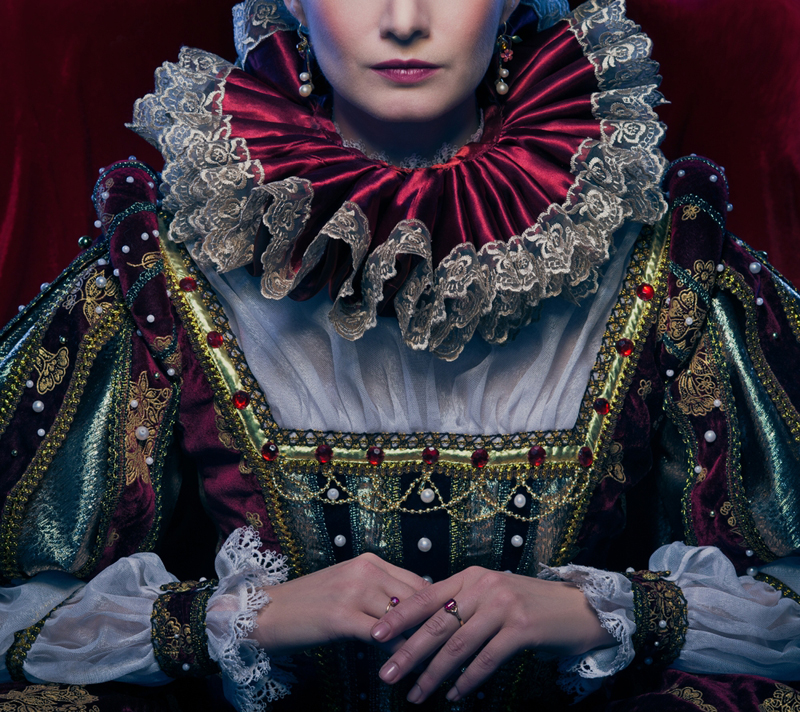

Under Francis I, the costume is refined, luxurious. For the first time, its aim is to enhance and amplify the beauty of the wearer. Embroidery, rich fabrics and jewellery make their appearance thanks to the development of foreign trade and the enrichment of the nobles who can now afford a little more extravagance.
The linen shirt became an essential part of the wardrobe; a symbol of wealth, the goal is to own the most beautiful and white shirt possible. As a decorative element, lace dresses collar and cuffs; over time, it becomes wider and wider and the sleeves become extremely puffy.
It was also at this time that an emblematic feminine accessory was born: the corset. Undergarment, this object worn by the women of the aristocracy until the 19th century, despite the suffering endured by those who wore it, was designed to draw and tighten the bust to give the impression of an extremely thin waist and sublimate the neckline. On the contrary, the satin, silk or velvet skirt, is worn over a wide hoop called vertugadin and gives fullness to the silhouette.
From 1515, the beard is in fashion and becomes a true sign of social distinction. At the same time, men's hair was shortened and styled with a headgear with raised edges, while women wore a headdress that wrapped the entire head. A few years later, an embroidered, high collar covering the chest and neck made its appearance in Renaissance costume; it became a real must-have under the name "strawberry".
Influenced by the richness and fantasy of Italian costume, the French of the 16th century chose their clothes according to the fashion of the time. Accessories, cloths and fabrics are there to bear witness to the power of the wearer and to give an account of his position in society. If fashion is not as powerful an industry as the one we know today, it already holds a preponderant place in international exchanges and in the vision that contemporaries have of their society.